SAMSUNG 42-Inch Class OLED S90F 4K Smart TV (2025): The Ultimate Technical Review & Performance Guide
In the rapidly evolving landscape of display technology, the term “smart TV” has become almost pedestrian. Every panel is “smart,” every TV connects to the internet. The new frontier, the true differentiator in 2025, lies in the silicon. It’s not just about the panel; it’s about the processor *driving* that panel. Samsung has been at the forefront of this processing-centric philosophy, and their 2025 S90F series, particularly this versatile 42-inch model, represents the zenith of this approach. This isn’t just a 4K OLED display; it’s an AI-powered image-processing engine designed to analyze, rebuild, and perfect content on a frame-by-frame, pixel-by-pixel basis.
The 42-inch form factor is a critical strategic move. It positions the S90F not just as a bedroom TV, but as a direct, high-end competitor to the burgeoning OLED gaming monitor market. It’s a display that promises the best of both worlds: the computational power of a high-end smart TV and the pixel-perfect response and refresh rate of an elite gaming panel. The heart of this entire operation is the new NQ4 AI Gen3 Processor, a piece of hardware that Samsung claims is powered by a staggering 128 neural networks.
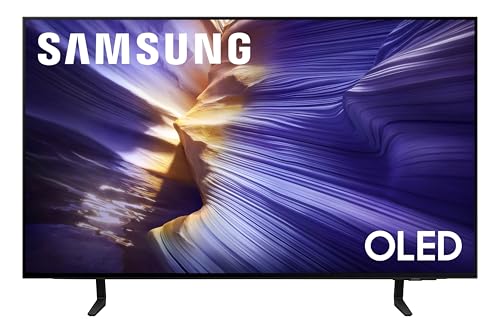
But what does that marketing-speak *actually* mean for the end-user? This ultimate guide will serve as a deep-dive technical analysis of the S90F’s core components. We will deconstruct the function of its AI processor, analyze the mechanics of its 4K AI Upscaling Pro, dissect its motion handling capabilities for both gaming and cinema, and evaluate the real-world impact of its AI-driven HDR enhancement. For the technical enthusiast, the spec-conscious gamer, or the cinephile who refuses to compromise on picture quality, this is a detailed breakdown of one of the most significant displays of the year.
The Neural Engine: A Deep Dive into the NQ4 AI Gen3 Processor
The NQ4 AI Gen3 is the central nervous system of the S90F. To understand this TV, one must first understand this chip. When Samsung states it’s “powered by 128 neural networks,” they are describing a highly specialized form of parallel processing. Think of a traditional CPU as a brilliant, fast, single-task chef. A neural processor is like having 128 specialist chefs working simultaneously. One is an expert in sauce, another in pastry, another in grilling. On the S90F, one neural network is exclusively trained to identify and restore object edges. Another is trained to analyze and reduce film grain. A third is trained to recognize and smooth text. A fourth is dedicated to analyzing motion vectors to predict the path of a fast-moving object.
This parallel-processing architecture is what allows for the “AI-enhanced picture and optimized sound” in real-time. The processor isn’t just applying a simple “sharpen” or “brightness” filter to the entire image. It’s performing a complex, multi-stage analysis and reconstruction. This process involves:
- Content Source Analysis: The chip first identifies the source. Is it a 720p compressed stream? A 1080p Blu-ray? A native 4K HDR game?
- AI-Based Deconstruction: The 128 networks then simultaneously analyze different components—object segmentation (identifying people vs. backgrounds), texture mapping, noise and compression artifact detection, and motion vector analysis.
- Intelligent Reconstruction: Based on this analysis, the processor rebuilds the image. It selectively reduces noise in a dark sky without softening the details of a face in the foreground. It sharpens the text of a scoreboard while simultaneously smoothing the motion of the players.
- Audio-Visual Synergy: A part of this processing power is also dedicated to “Optimized Sound.” This includes features like Object Tracking Sound (OTS), where the AI identifies the source of a sound on-screen (e.g., a car moving from left to right) and pans the audio across the TV’s speakers to match. It’s a holistic approach to the viewing experience, where audio and video are processed in tandem.
This computational overhead is what separates a 2025 flagship from mid-range models. It’s an “exceptional 4K experience” not just because the panel has 8.3 million pixels, but because a dedicated AI engine is meticulously curating the signal *before* it ever reaches those pixels. This foundation is what makes all the other features—upscaling, HDR, and motion—possible at such a high level.
Transforms Everything: Deconstructing 4K AI Upscaling Pro
This is arguably the most critical feature for 99% of viewing. The hard truth is that most content is *not* native 4K. Your cable box, your 1080p Netflix subscription, your old Blu-ray collection, and most YouTube videos are all sub-4K. The S90F’s ability to “transform everything on screen to impressive 4K” is paramount. This is where the NQ4 AI Gen3’s 128 neural networks truly shine.
Traditional upscaling (like bicubic interpolation) is “dumb.” It’s a mathematical algorithm that stretches a low-resolution image to fit a high-resolution screen. It sharpens edges, but in doing so, it also sharpens compression artifacts, creates halos (ringing) around objects, and makes textures look artificial and waxy.
4K AI Upscaling Pro is a fundamentally different process. It’s a generative, database-driven restoration. Here is a simplified technical breakdown of the pipeline:
- Step 1: Artifact & Noise Reduction. Before any scaling occurs, the AI networks trained on “dirty” signals identify and remove compression blocks (macroblocking) and digital noise. This “cleans” the source image, ensuring that the TV isn’t just sharpening garbage.
- Step 2: AI Edge & Texture Generation. This is the “secret sauce.” The processor compares the low-res source image to a massive, onboard database of high-resolution images. It doesn’t just sharpen an edge; it *rebuilds* it. It recognizes a blurry line as “brick mortar” or “human hair” and intelligently generates new pixels to create a sharp, natural-looking texture that *should* be there. This adds “impressive details” that were completely lost in the original source.
- Step 3: AI Contour & Banding Removal. A separate network analyzes color gradients. In low-bitrate content (like a streamed sunset), you often see “banding” where colors step-change instead of smoothly transitioning. The AI processor identifies these “steps” and injects new, intermediate color shades to create a perfectly smooth, 10-bit gradient, making the image look significantly more high-fidelity.
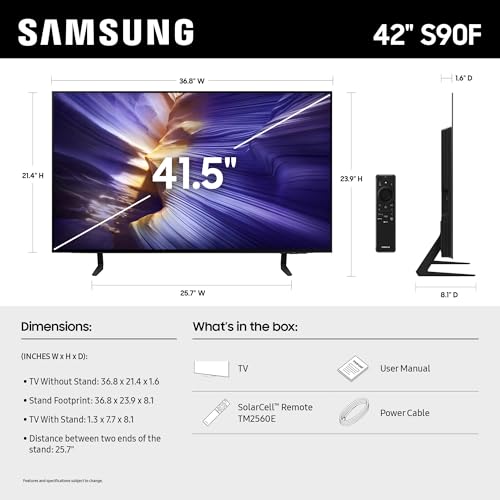
The result is an “incredibly sharp and smooth picture quality” that often looks *better* than the original 1080p source viewed on a native 1080p screen. It’s a restoration process. For anyone with a large library of 1080p Blu-rays or who streams a lot of content, this single feature is transformative. It ensures that the 4K panel is never “wasted,” even when the source isn’t 4K.
Panel & Illumination: OLED HDR+ and Dynamic Scene Analysis
Now we move from the processor to the panel itself. The foundation of the S90F is its OLED (Organic Light Emitting Diode) panel. Unlike traditional LED TVs that use a backlight, each of the 8.3 million pixels in an OLED panel creates its own light. This allows for two signature, unbeatable traits:
- Perfect Black: To display black, a pixel simply turns itself completely off. Not “dimmed,” but *off*. This creates an infinite contrast ratio, as you have pure light next to pure blackness.
- Pixel-Level Light Control: There is no “blooming” or “haloing,” where a bright object (like subtitles) bleeds light into the black bars above and below it.
The historical challenge for OLED has been peak brightness. This is where Samsung’s AI processing re-enters the picture. The feature description states: “The NQ4 AI Gen3 processor analyzes each scene and boost brightness to illuminate even the smallest details.” This is far more sophisticated than just a global “brightness” setting. This is **Dynamic Tone Mapping** and **Specular Highlight Management** handled by the AI.
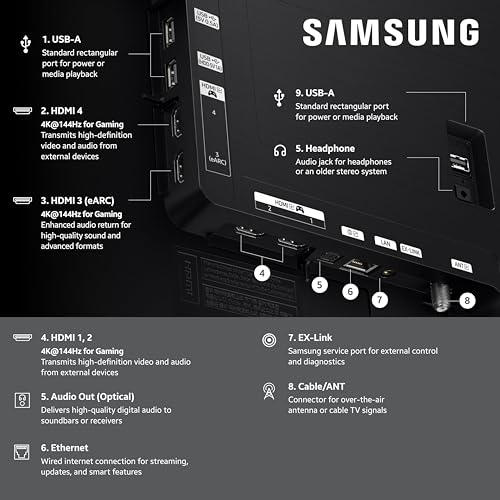
Here’s how it works: The NQ4 AI processor analyzes the HDR metadata of the incoming signal (HDR10, HDR10+, HLG) on a scene-by-scene or even frame-by-frame basis. It identifies the brightest and darkest parts of the image. It then “boosts brightness” *selectively*. A small, bright highlight—like a reflection on a car, a spark from a fire, or a star in the-sky—can be driven to a high peak brightness, while the surrounding darker areas remain dark. This “powerful brightness and deeper contrast” isn’t about making the whole screen brighter; it’s about *expanding the dynamic range* within the scene itself. This is what **OLED HDR+** is: a combination of the perfect blacks of the OLED panel and the intelligent, AI-driven highlight boosting of the NQ4 processor. This “nuanced detail” is revealed because the TV has the intelligence to allocate its power with surgical precision, something a less advanced processor simply cannot do.
Elite Motion & Gaming: Motion Xcelerator 144Hz & AI Motion Smoothing
This is where the 42-inch S90F becomes a true hybrid, category-defining product. It is, without reservation, an elite-tier gaming display.
For the Gamer: Motion Xcelerator 144Hz
This is the headline specification for any PC or current-gen console (PS5, Xbox Series X) gamer. Let’s break down the components:
- 144Hz Refresh Rate: The panel can refresh the image 144 times per second. This is a massive leap from the 60Hz or 120Hz standard. Paired with a PC or console capable of outputting high frame rates, this results in an unparalleled feeling of smoothness and responsiveness.
- VRR (Variable Refresh Rate): The TV supports VRR, which means the panel’s refresh rate *syncs* to the frame rate of the game. If your game suddenly drops from 144fps to 110fps, the TV’s refresh rate drops to 110Hz to match. The result? Absolutely zero screen-tearing.
- 4K Resolution: Achieving 4K at 144Hz is the holy grail of high-end gaming, requiring an HDMI 2.1 connection. This display is built for it.
- OLED Response Time: Beyond refresh rate, OLEDs have a near-instantaneous pixel response time (often under 0.1ms). This means there is virtually no “ghosting” or “smearing,” which is common on slower LED/VA panels.
The combination of 4K, 144Hz, VRR, and sub-millisecond response time makes this 42-inch model arguably one of the best gaming displays on the planet, period. It’s a “tear-free gaming” experience with “elite speeds.”
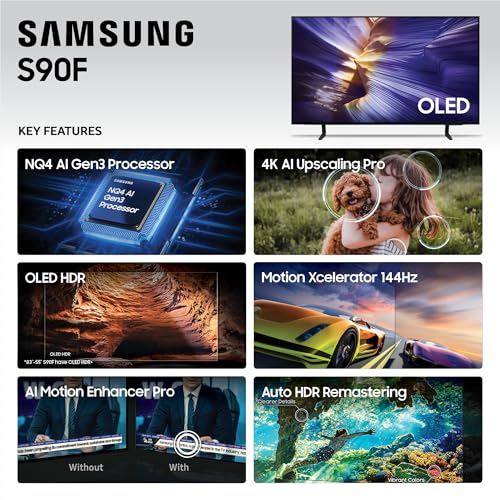
For the Sports & Movie Fan: AI Motion Smoothing
High refresh rates are also crucial for non-gaming content, like live sports. However, TV broadcasts (typically 60Hz) and movies (24Hz) present different challenges. This is where the AI processor’s motion smoothing comes in. The feature notes: “The AI processor smooths the motion of fast-moving balls and text, reducing blur and flickering.”
This is *not* the universally-hated “Soap Opera Effect.” This is a new, intelligent form of **Motion Estimation, Motion Compensation (MEMC)**.
- Traditional MEMC: Inserts “fake” frames to smooth out motion. It applies this to the *entire* image, which is why a person walking in the background of a 24fps film looks unnaturally smooth and “fake.”
- AI-Powered MEMC: The NQ4 AI processor’s neural networks perform object segmentation. It *knows* what the fast-moving ball is. It *knows* what the scrolling text on the news ticker is. It can then apply motion smoothing *only* to those specific objects, while leaving the rest of the image (the actors, the stadium crowd) at its native cadence.
This is a revolutionary change. It allows you to “keep your eye on the ball” because the ball itself is being clarified and its motion smoothed, but you don’t have to suffer through the soap opera effect on the rest of the image. It’s the best of both worlds, reducing motion blur where it matters and preserving cinematic judder where it’s intended.
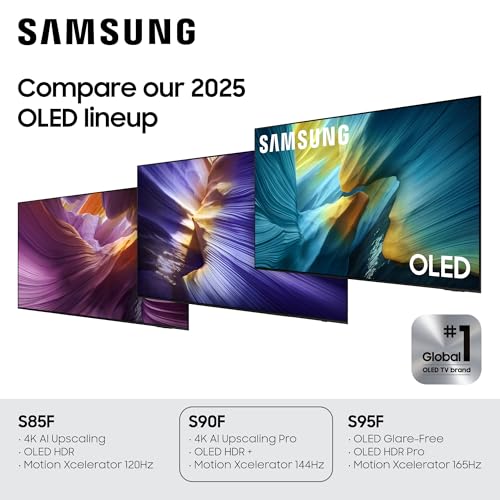
The Final Polish: SDR-to-HDR Transformation & Samsung Vision AI
Two final features cap off the S90F’s processing prowess. The first, “Transform content to HDR-like quality,” is a key part of the upscaling pipeline. As we noted, most content isn’t 4K. Even more content is not HDR. It’s SDR (Standard Dynamic Range). Playing SDR content on a powerful HDR TV can look flat and dull, as it only uses a fraction of the panel’s color and brightness capabilities.
The NQ4 processor “intelligently transforms SDR content” by running it through an AI-driven HDR re-mapping filter. This isn’t a simple “stretch.” The AI analyzes the SDR image, identifies what *should* be a bright highlight (e.g., the sun, a lamp, a reflection) and what *should* be a deep shadow, and then intelligently re-maps the color and luminance to create “brighter highlights, more vibrant colors, and clearer details.” It’s essentially an “HDR Remastering” effect, and it does a stunning job of breathing new life into old content. It makes everything you watch, new or old, take advantage of the S90F’s advanced panel.

Finally, “Samsung Vision AI” is the umbrella term for the TV’s smart optimization. This is the “auto-pilot” mode. When enabled, the AI processor identifies the *genre* of content you’re watching. If it detects a movie, it will adjust the picture to a warmer color temperature and enable 24fps cadence. If it detects sports, it will automatically engage the AI motion smoothing for the ball and text. If you switch to game mode, it will disable all non-essential processing to achieve the lowest possible input lag. It’s the “brains” of the NQ4 AI Gen3 processor acting as a professional calibrator, making adjustments in real-time to ensure the best possible experience without you ever needing to touch the settings menu.

Performance Summary: Pros and Cons
After this exhaustive technical breakdown, the S90F’s strengths and (potential) weaknesses become clear. This is a display operating at the absolute peak of consumer technology.
Pros:
- Class-Leading AI Processing: The NQ4 AI Gen3 Processor, with its 128 neural networks, provides the most sophisticated and intelligent image processing on the market.
- Revolutionary AI Upscaling: The 4K AI Upscaling Pro is not a gimmick. It is a genuine restoration engine that makes sub-4K content look incredibly sharp and clean.
- Elite Gaming Performance: The combination of a 4K 144Hz panel, VRR support, and near-instant OLED response time makes this a true end-game display for PC and console gamers.
- Intelligent Motion Handling: The AI-powered motion smoothing for sports (object-based) while respecting 24fps film cadence is a brilliant solution that satisfies both sports fans and cinephiles.
- Superb Dynamic Range: The combination of perfect OLED blacks and AI-boosted specular highlights (OLED HDR+) delivers a breathtaking, high-contrast image.
- Versatile Form Factor: The 42-inch size is the perfect “do-it-all” display, large enough for a bedroom but compact enough for a high-end desktop setup.
- Excellent SDR-to-HDR Conversion: The AI-powered remastering gives new life to all non-HDR content.
Cons:
- Proprietary HDR Format: Samsung continues to favor its own HDR10+ format over Dolby Vision, which is more widely used on streaming services like Netflix.
- Tizen Smart OS: While fast and feature-rich, Samsung’s Tizen operating system can be ad-heavy and less user-friendly than some competing platforms like Google TV.
- Theoretical Burn-In Risk: As with all OLED displays, there is a long-term, theoretical risk of static image retention (burn-in). However, modern mitigation techniques have made this a minimal concern for typical users.
- Size Limitation: While a pro for many, the 42-inch size will be too small for those seeking a primary, cinematic living room experience (though larger S90F models are available).
Conclusion: The New 42-Inch Benchmark
The SAMSUNG 42-Inch Class OLED S90F (2025 Model) is not just an iteration. It’s a statement. It declares that the future of display technology is computational. The true “beauty” of its image comes from the “science” of its processor. The NQ4 AI Gen3 chip, with its 128-network architecture, is a marvel, performing real-time restoration, enhancement, and optimization that was unthinkable just a few years ago.
Its AI upscaling is, simply put, the best in the business, making it the perfect TV for a world still catching up to 4K. Its motion and gaming features are not just “good”; they are elite, positioning this 42-inch model as a direct and superior alternative to almost any high-end gaming monitor. It bridges the gap between desktop and living room, between gaming and cinema.
While the lack of Dolby Vision is a persistent (though minor) point of contention, the sheer power of the AI processor to optimize HDR10+ and “remaster” SDR content largely makes up for it. The S90F is a triumph of engineering. It is the new benchmark for what a small-to-mid-sized 4K display can and should be. For the gamer, the desktop power user, or the small-room cinephile who demands the absolute best, the 2025 S90F is the ultimate choice.
See more posts in the category LED & LCD TVs.







